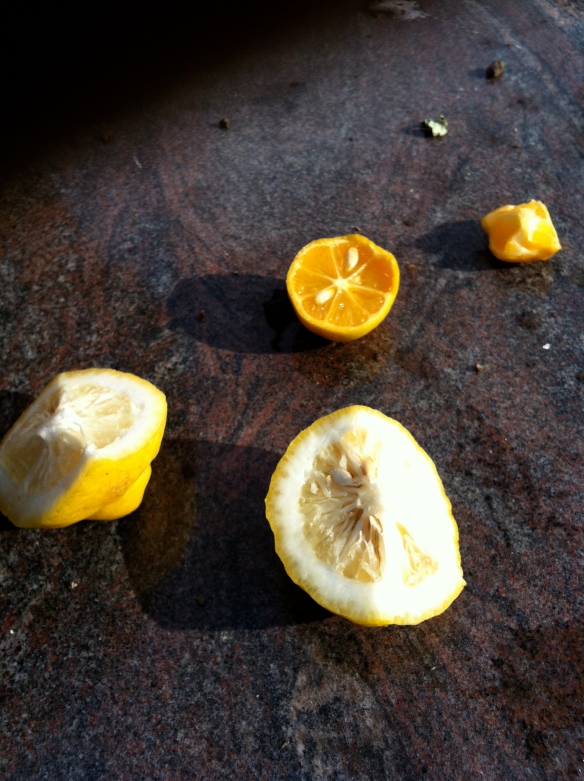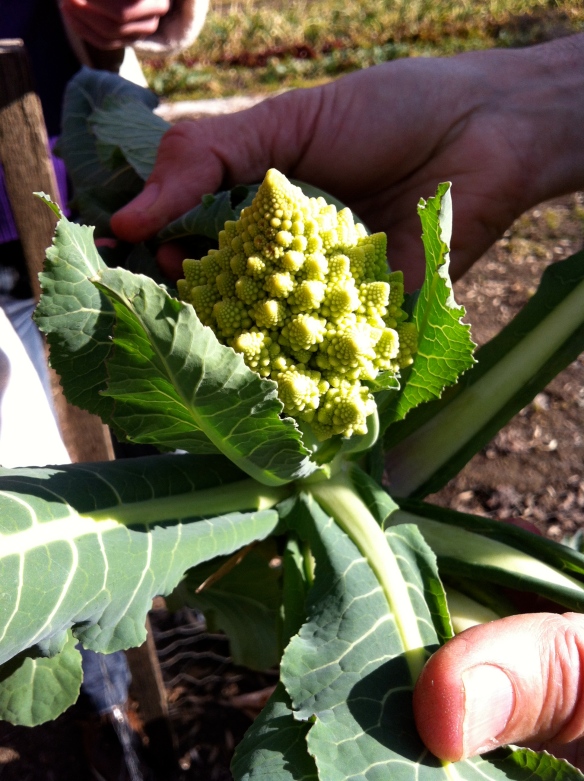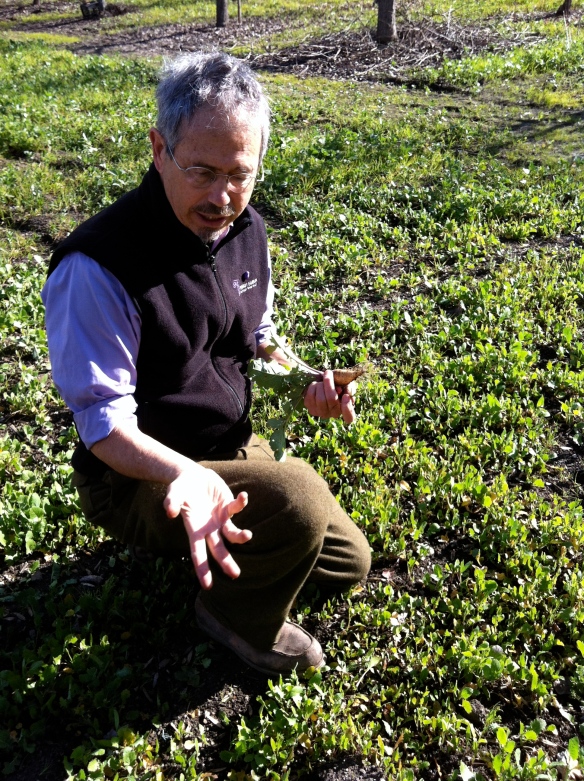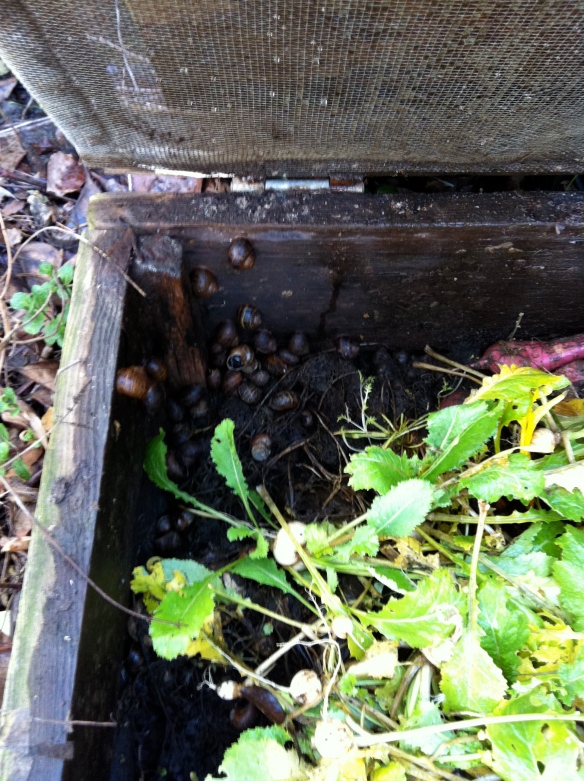One of the nice little perks of having a foodie friend like Nicole is that she knows a lot of very interesting, creative people. As I mentioned in the previous post, last week Nicole came up to San Francisco for the Good Food Awards. She’s a chocolate maker and one of her bars was a finalist in the competition. She had some time between events, so we roamed all around San Francisco, trekked over to Berkeley, and took a trip to Napa Valley doing what food lovers do best: eating. I’ll spare you the details of our 36-hour Napa food fest, but let’s just say by the time I got home yesterday, all I wanted for dinner was a sweet potato and broccoli. While we were in Napa, though, Nicole introduced me to master culinary gardener, Peter Jacobsen, who generously offered to show his his garden. I love gardening, though I haven’t done much of it since we moved to San Francisco. Our neighborhood is one of the foggiest areas of the city, especially during the summer months. I was especially excited to meet Peter.
Since it’s winter, his garden is fairly dormant. Still, he managed to teach us some pretty incredibly things about winter crops. He has 120 trees in his orchard. Here are a few of the things we tasted:

Citrus sampled (but not all shown here): Yuzu, Palestinian limes, meyer lemons, bergamont oranges, and Rangpur limes. You can see that some of the flesh is dry. That’s because it’s been really cold; but the rinds were still fragrant.
I learned the term “fractals” which, according to wikipedia, is a mathematical term that means “exactly or nearly the same at every scale.” In other words, when broccoli or cauliflower produce the little blossoms, they are an exact duplicate of the existing plant. Think of it as a broccoli “mini-me.” We tasted a romanesco cauliflower fractal.
We tasted rosemary and lavender flowers, tubers, sorrel, fennel, and baby rootabagas. Each time Peter showed us something, he encouraged us to rub the plant between our fingers, smell it, let it sit on our tongues. Then he’d say, “Now, a few of these blossoms would be delicious sprinkled on a salad or on paired with . . .” Or, “You could make a delicious soup with the inner part of these stems.” Or, “All you need with these is a little olive oil and salt.” Some of the flavors were so subtle I had to close my eyes to taste them, but when I did my whole mouth came alive. It was wonderful to learn from someone who knew how to use every part of a plant and who had a dozen ideas of how to cook them.
Here’s Peter. It looks like he’s kneeling on plain ‘ole grass (or something like it) right? Turns out, this is a field of chickweed which is actually a weed and has a delicate flavor. Who knew?!
Finally, Peter showed us his snail corral. He’s the only certified organic farmer of “free range” snails in California. He taught us another term: “A mess”–which is actually a unit of measure equaling approximately 100. “A murder of crows,” “a murmuration of starlings,” “a mess of snails . . . ” If you look closely, you can see some of them in the top left corner.
Such an inspiring day. . . Peter invited me to come back next summer when the garden is in full bloom. You’d better believe I’m going to take him up on his offer.



